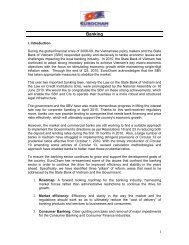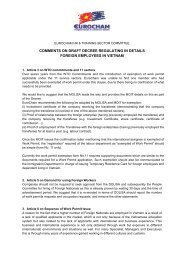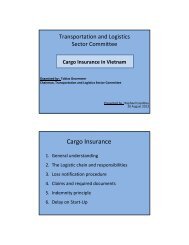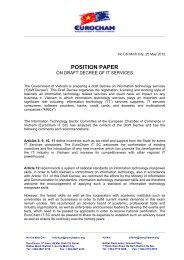ASEAN MUTUAL RECOGNITION ARRANGEMENT ON TOURISM ...
ASEAN MUTUAL RECOGNITION ARRANGEMENT ON TOURISM ...
ASEAN MUTUAL RECOGNITION ARRANGEMENT ON TOURISM ...
Create successful ePaper yourself
Turn your PDF publications into a flip-book with our unique Google optimized e-Paper software.
The early MRAs tended to operate on a bilateral basis, facilitating agreement betweentwo countries wanting to work together. However, as they grew and evolved, MRAsbecame more complex, dealing with multi-lateral issues of trade, where a number ofnations are involved. This is the case in the European Union, APEC, and also in <strong>ASEAN</strong>where 10 nations are involved. <strong>ASEAN</strong> now has a variety of MRAs seeking conformance ofstandards in fields such as nursing, telecommunications and tourism.1.5 Benefits of MRAsFor governments, MRAs ensure commitment and agreement to international trade, andencourage the sharing of good practice and information between partners. This can leadto:Reduced costs;Increased competitiveness;Increased market access; andFreer flow of trade.For tourism professionals and the industry, MRAs provide the following benefits:Facilitate mobility of tourism professionals based on the tourism competencyqualification/ certificateEnhance conformity of competency based training/educationRecognise skills of tourism professionalsImprove the quality of tourism human resources (graduates are ready to work inthe industry)Enhance the quality of tourism services.1.6 Purpose of MRA on Tourism ProfessionalsThe <strong>ASEAN</strong> MRA on Tourism Professionals (MRA-TP) seeks to increase the internationalmobility of tourism labour across the <strong>ASEAN</strong> region in line with <strong>ASEAN</strong> policy. Each <strong>ASEAN</strong>nation has its own standards, certification and regulations for recognising thecompetency of workers in the tourism sector. Therefore, there is a need for an MRA tofacilitate agreement on what constitutes equivalent competency to work in tourism by aworker, for example from Indonesia, who is seeking a position in Malaysia. The MRA – TPis therefore designed to:a) Address the imbalance between supply and demand for tourism jobs across the<strong>ASEAN</strong> region; andb) Establish a mechanism for the free movement of skilled and certified tourismlabour across the <strong>ASEAN</strong> region.The objectives of MRA – TP are threefold, to:P a g e | 6














